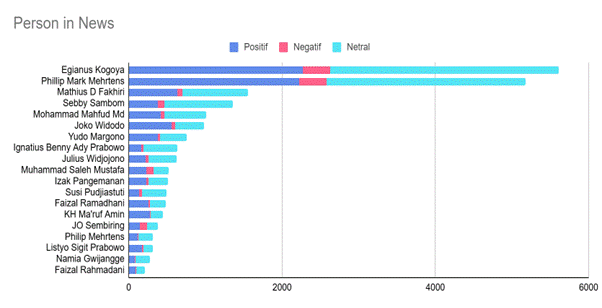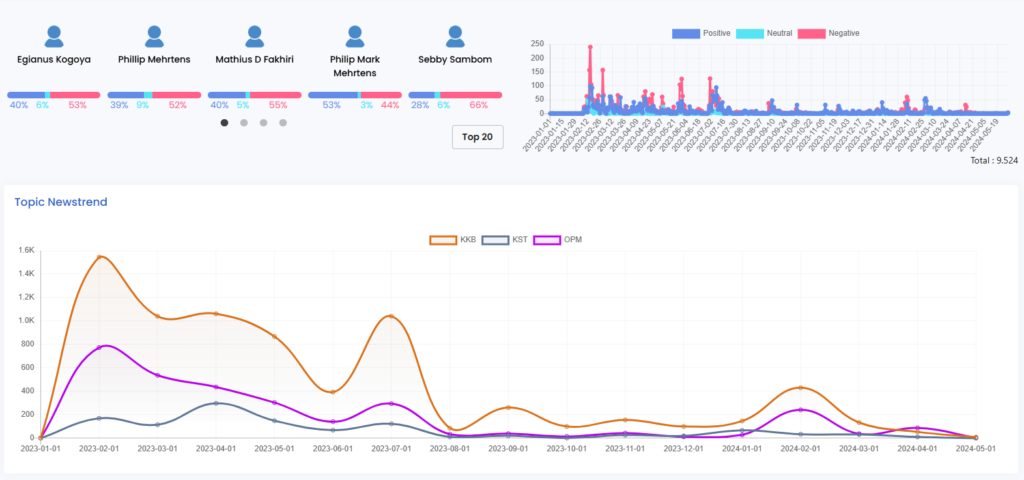Understanding ESG: Definition, Functions, and the Role of Media Monitoring
Over the past few decades, growing awareness of sustainability has reshaped the way companies and investors evaluate business performance. Rising…

A Susi Air Pilatus Porter burst into flames on the Paro airstrip, Nduga Regency, on 7 February 2023. Within hours the West Papua National Liberation Army (TPNPB-OPM) claimed to have taken the New Zealand pilot, Philip Mark Mehrtens, hostage. What first looked like “just” an aviation incident instantly morphed into a cross-border diplomatic crisis—while opening a new chapter in the long-running information war over Papua.
For more than 20 months the foreign pilot became the most valuable bargaining chip in the Papua conflict. Negotiation ebbed and flowed with gunfire; the public swung between promises of release and threats of execution-until 24 September 2024, when TPNPB-OPM finally freed Philip, ending one of the region’s most dramatic human-interest sagas.
Newstensity’s monitoring captured precisely how the name “Philip Mark Mehrtens” topped press attention.

Coverage Peaks
• February 2023: the abduction photos of the hand-cuffed pilot go viral.
• July 2023: TPNPB-OPM escalates threats; government launches “Cartenz” joint operation.*
Thousands of articles show that Philip Mark Mehrtens became more than a victim; he turned into a battleground of narratives between the state and pro-independence forces.
Mainstream media never treated Mehrtens’ abduction as a political maneuver but as pure criminality rupturing sovereignty. The frame draws on statements from task-force chiefs, military commanders and the Coordinating Minister for Political, Legal and Security Affairs. Using Robert Entman’s four-part framing model, and backed by Newstensity data, the anatomy is:
| Dimension | State Narrative |
|---|---|
| Problem Definition | The Paro incident is terrorism against civilians and the nation: the torching of the plane, a foreign hostage, armed attacks on troops and villagers. Political motives are stripped from public debate. |
| Diagnosed Causes | Perpetrators consistently labeled KKB (Armed Criminal Group) or KST (Separatist Terrorist Group). The tag delegitimizes political goals by boxing them into penal crime. Avoiding “TPNPB-OPM” casts the enemy as mere criminals to be hunted, not peers for negotiation. |
| Moral Judgment | The government portrays itself as protector of citizens and rule of law— the antithesis of “terror.” Leaders such as TNI Commander Yudo Margono, Police Chief Listyo Sigit, and Coordinating Minister Mahfud MD repeat that military force is legitimate yet “persuasive,” cementing a heroic self-image. |
| Suggested Remedy | A single prescription: TNI–Police security operations. Armed law-enforcement is “valid,” while political dialogue is rejected as legitimizing crime. International mediation or self-determination talks vanish from policy tables. |
TPNPB-OPM speaks through spokesperson Sebby Sambom and field commander Egianus Kogoya. To them, holding Mehrtens is not crime but a forced-diplomacy stage to make the world look at Papua.
| Dimension | Resistance Narrative |
|---|---|
| Problem Definition | The hostage-taking is a calculated political act exposing “Jakarta’s colonialism.” After decades of conflict, violence is “the last language.” |
| Diagnosed Causes | They call themselves TPNPB-OPM (West Papua National Liberation Army – Free Papua Organization) and reject KKB/KST. Using the formal name legitimizes them as a lawful political-military entity pursuing independence. |
| Moral Judgment | Indonesia is cast as a “colonial” power forcing Papuans to submit via economic exploitation and military operations. OPM becomes heroic victims defending collective dignity. Images of Philip flanked by armed rebels reinforce “liberation forces” rather than “criminals.” |
| Suggested Remedy | Because the problem is political, the solution is political: equal-status dialogue mediated by a neutral actor such as the UN, paving a path toward self-determination. |
The difference between KKB and TPNPB is no mere vocabulary. Naming is a political act defining reality, legitimizing violence and steering public opinion. Sociologist Ariel Heryanto notes that naming shapes legitimacy: branding as criminals shrinks separatist motives; accepting “TPNPB” opens doors to dialogue. Newstensity shows most media employ KKB, followed by “OPM,” then “KST”—evidence of state-framing dominance.


Newstensity identifies actors and agendas during the Susi Air hostage period:
| Spectrum | Key Actors | Main Agenda | Dominant Channels |
|---|---|---|---|
| State | Yudo Margono, Listyo Sigit, Cartenz task force | Law-enforcement, military ops | Press conferences, Polhukam releases |
| Resistance | Sebby Sambom, Egianus Kogoya | Internationalize Papua issue, demand referendum | Satellite-phone videos, independent channels |
| Humanitarian | Susi Air, Church & customary leaders | Hostage safety, peaceful path | Open letters, on-site mediation |

Actor frequency and channel distribution (Newstensity).
| Date | Milestone |
|---|---|
| 7 Feb 2023 | Susi Air plane burned at Paro; pilot abducted. |
| Feb–Mar 2023 | OPM’s first threat video; government tightens operations. |
| Jul 2023 | Escalation; OPM claims readiness to shoot down military aircraft. |
| Aug 2024 | Egianus Kogoya signals willingness to free pilot; task force doubts it. |
| 24 Sep 2024 | Philip Mark Mehrtens released, handed to TNI–Police medical team. |
Each critical point sparked a publication spike captured by Newstensity’s algorithm, underscoring the bond between armed conflict and media-monitoring dashboards.
Early on, TPNPB-OPM weathered the storm by debunking the TNI Commander’s initial claim—backed by photos showing the pilot in captivity. Over time, however, the state commanded information flow through exclusive mainstream access, evidenced by the far higher frequency of KKB/KST than “OPM” in daily reports. Still, the eventual release shows that humanitarian dialogue, not force, unlocked success—often drowned out between violent and political narratives.

Freeing Philip Mark Mehrtens closes one drama but raises how far Indonesia and the world will heed Papuans’ voices behind the guns. As long as “criminal” and “separatist” labels stab each other, peace will idle. The Nduga experience suggests that a human-centered approach plus sharp media monitoring is the most rational mix. Newstensity, for instance, shows how data expose bias patterns and warn when public tension boils. Ultimately, this conflict is not just a jungle war; it is also a fight of words, headlines and frames that decide whether Mehrtens rekindles hope or stokes an old blaze.
Writer: Fajar Yudha Susilo, Ilustrator: Aan K. Riyadi
Over the past few decades, growing awareness of sustainability has reshaped the way companies and investors evaluate business performance. Rising…
On a rather scorching Friday afternoon, 18 July 2025, Thomas Trikasih Lembong—better known as Tom Lembong— entered the Hatta Ali…
The traditional pacu jalur boat-racing sport has recently gone viral, gaining wide recognition both in Indonesia and abroad over the…
In the last decade, the global economic map has shifted significantly. The BRICS group of emerging economies — Brazil, Russia,…
In the past two weeks coverage of Robodog and the Humanoid Police Robot has exploded across print, online, and broadcast…
On Tuesday, 24 June 2025, Indonesia’s Attorney General’s Office (AGO) signed a memorandum of understanding with the country’s four largest…
The dream of building machines that think like humans began with Alan Turing’s famous Turing Test in 1950. The term…
Two neighbouring Indonesian provinces, Aceh and North Sumatra, were thrust into the headlines after the Home Affairs Ministry issued Decree…
Indonesia’s long “fintech-lending winter” has claimed another major player. Peer-to-peer (P2P) platform PT Akseleran Keuangan Inklusif Indonesia – better known…
The Lippo Group has unveiled a new concept for subsidized housing in Indonesia, showcasing two mock-up units at the lobby…